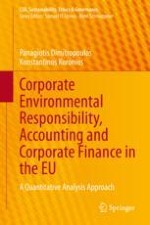2021 | OriginalPaper | Chapter
2. Corporate Environmental Responsibility in the EU
Authors : Panagiotis Dimitropoulos, Konstantinos Koronios
Published in: Corporate Environmental Responsibility, Accounting and Corporate Finance in the EU
Publisher: Springer International Publishing
Activate our intelligent search to find suitable subject content or patents.
Select sections of text to find matching patents with Artificial Intelligence. powered by
Select sections of text to find additional relevant content using AI-assisted search. powered by
